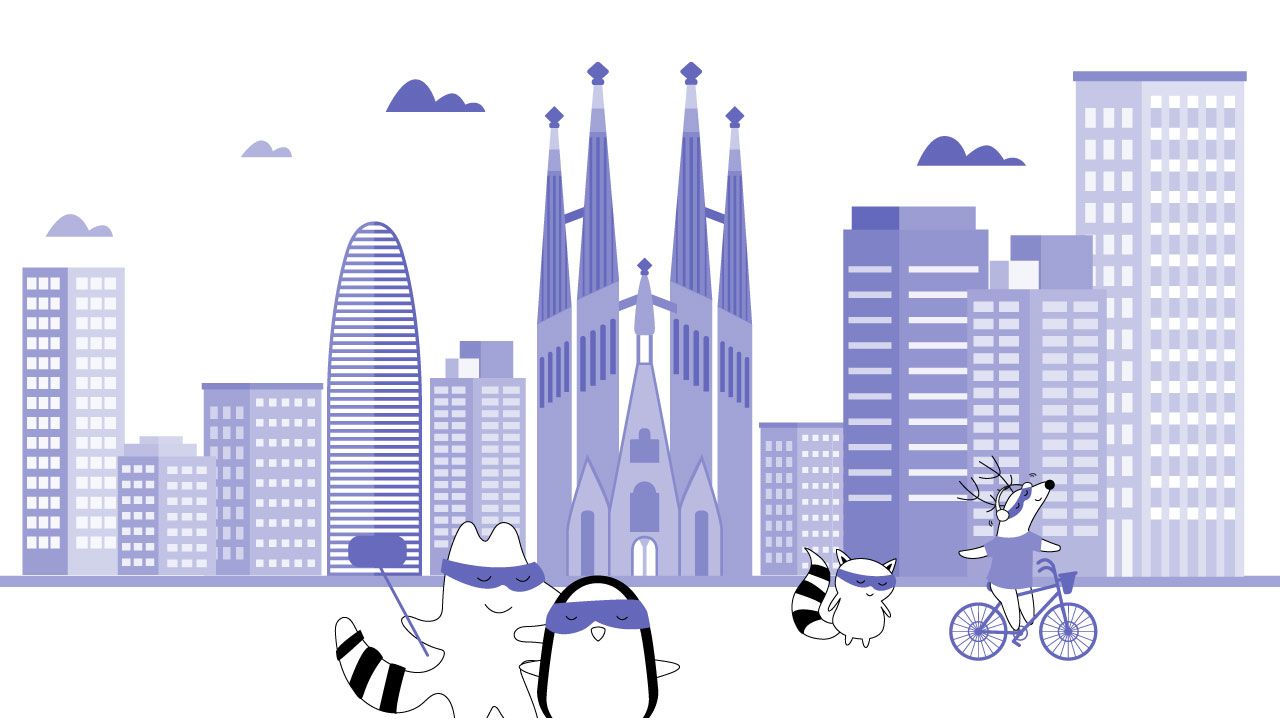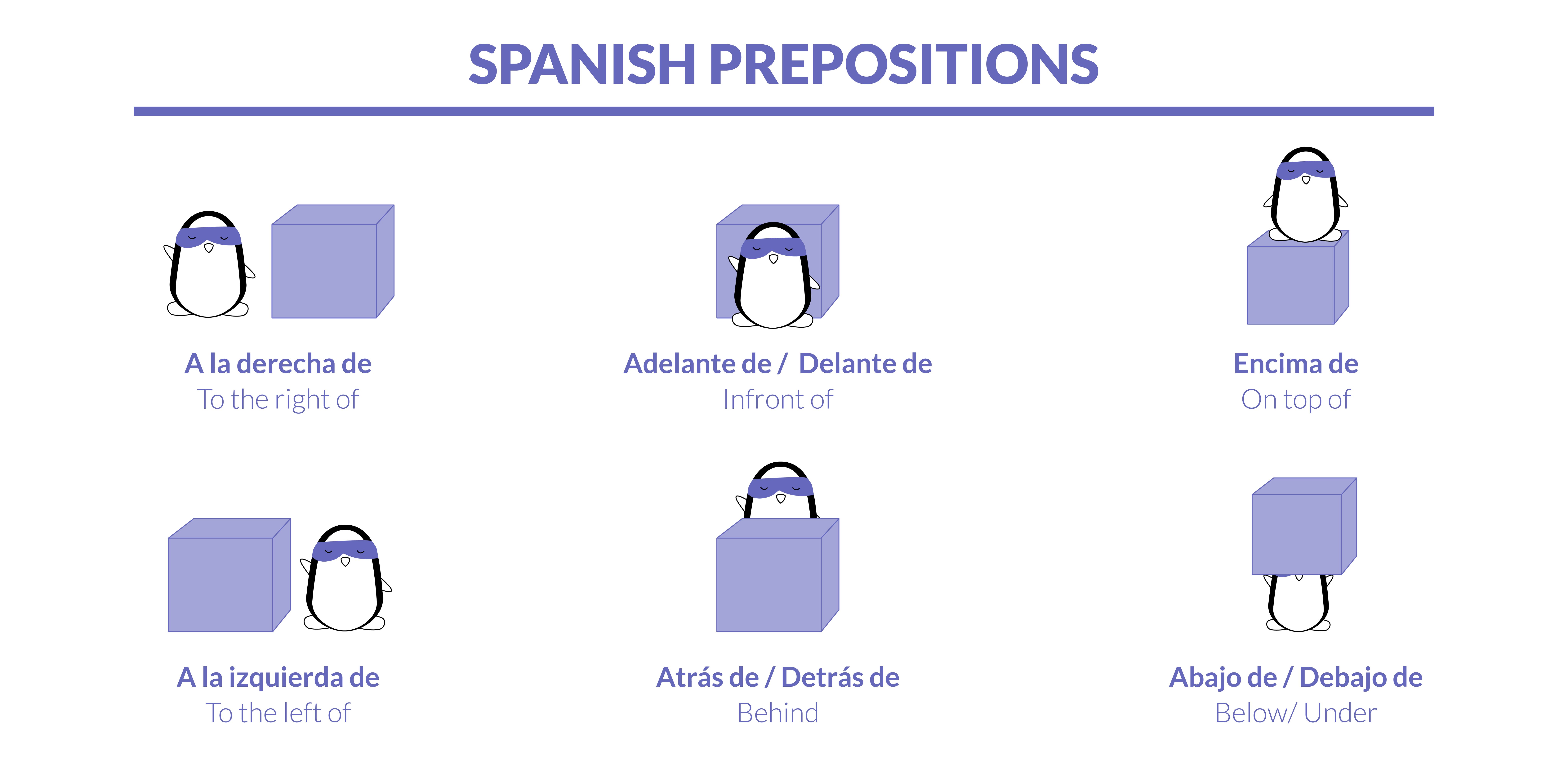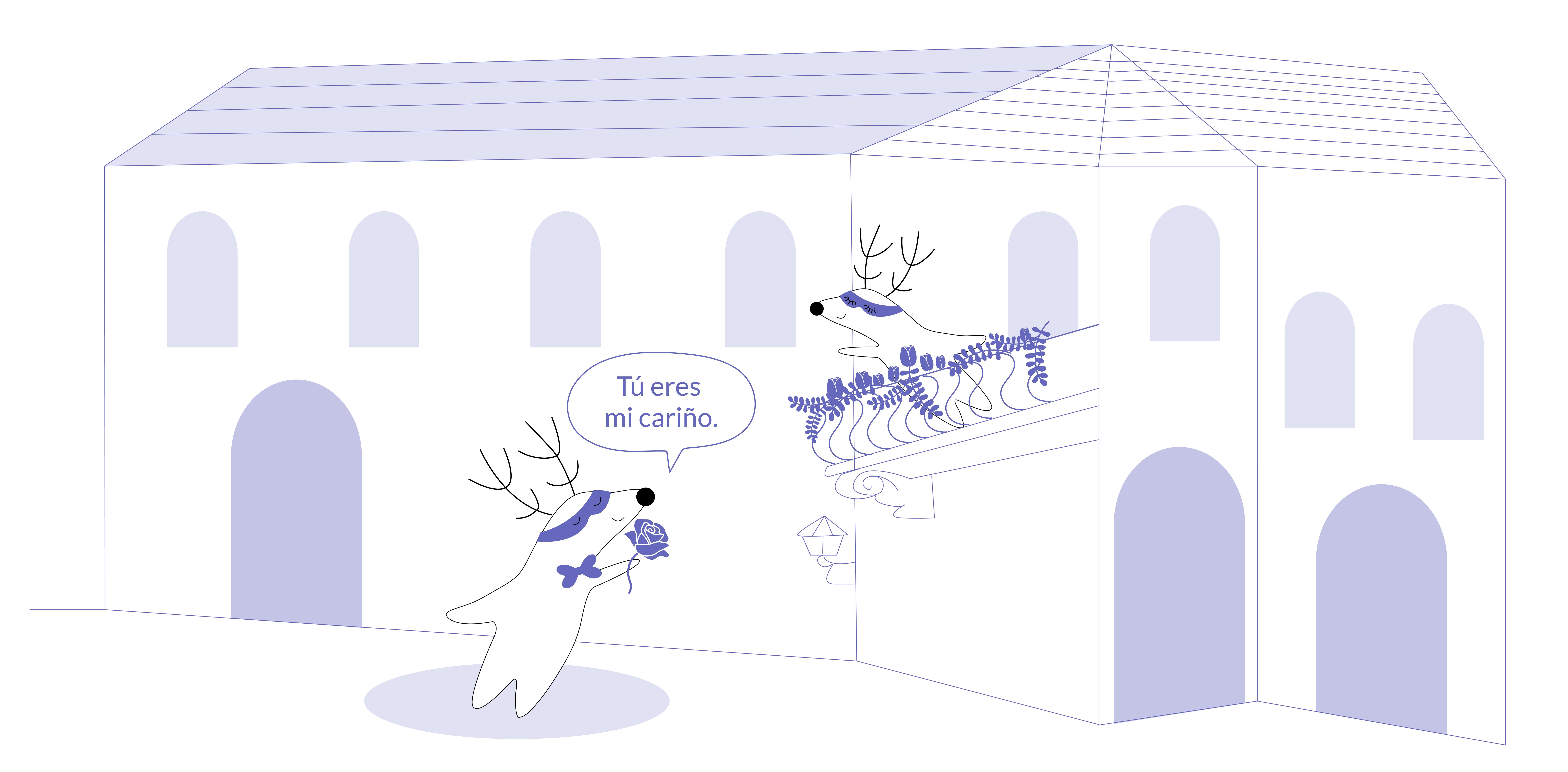
Spain is a country rich in culture, history, and tradition. Situated on the Iberian Peninsula, it is bordered by the Mediterranean Sea to the south and east, with Portugal to the west.
Spain has been occupied by many different cultures over the centuries, including the Celts, Romans, Moors, and Arabs. This has resulted in a unique and diverse culture that is evident in everything from food to art, language, and architecture.
Join us as we dive into some of the most unique and fascinating aspects of Spanish culture – only then will you know how to experience it firsthand.
Learn Spanish with Langster
Art in Spain
Perhaps the first cultural aspect you think of when you think about Spain is its contribution to the world’s art. Spanish art is characterized by its intense colors and emotional themes. It is often very expressive and can be seen in many different forms, from paintings and sculptures to architecture and movies.
When it comes to Spanish painters, you can probably name a few right away – Spain has produced some of the world’s most renowned artists, including:
Pablo Picasso
Pablo Picasso is probably the most famous Spanish artist of all time. He was born in Malaga in 1881 and is one of the co-founders of the Cubist movement. His most famous paintings include Les Demoiselles d’Avignon and Guernica.
Diego Velázquez
Another hugely successful Spanish painter was Diego Velázquez, who was born in Seville in 1599. He is known for his realistic portraits, such as those of the Spanish royal family. His most famous painting is Las Meninas.
El Greco
El Greco was a Greek artist who moved to Spain in the late 16th century and is known as one of the most renowned sculptors and architects of the Spanish Renaissance. He is known for his unique style and use of light and color.
His most famous paintings include The Burial of the Count of Orgaz and View of Toledo.
Francisco de Goya
One of the most famous Spanish painters, Francisco de Goya was born in 1746 in Zaragoza and is known for his dark, disturbing, and sometimes grotesque paintings, which reflect the chaotic times he lived in and depicted scenes from the Napoleonic Wars and the Inquisition.
His most famous works include The Third of May 1808 and The Disasters of War, and they continue to be popular and influential today.
Salvador Dali
Of course, we can’t forget Salvador Dali, one of the most remarkable Spanish artists, born in 1904 in Figueres. He was a Surrealist painter, and his most famous works include The Persistence of Memory and The Dreams of Moses.
If you are interested in seeing some of the best Spanish art, be sure to visit the Museo del Prado in Madrid or the Salvador Dali Museum in Figueres.
Spanish Architecture
Spain is home to some of the most impressive architecture in the world. From the prehistoric monuments in Menorca in the Balearic Islands to the Moorish castles of Andalusia to the Gothic cathedrals of Barcelona, there is no shortage of beautiful buildings to admire.
Some of the most famous pieces of Spanish architecture include:
The Alhambra
One of the most iconic pieces of Spanish architecture is the Alhambra, a palace and fortress complex located in Granada. It was built in the 13th century and is one of the best-preserved examples of Moorish architecture in Spain. This UNESCO World Heritage Site is renowned for its intricate Moorish designs and stunning views of the city.
La Sagrada Familia
Another of Spain’s most famous pieces of architecture is La Sagrada Familia, a massive cathedral located in Barcelona. It was designed by Antoni Gaudí and has been under construction since 1882. This unfinished masterpiece is one of the most visited tourist attractions in Spain and is definitely worth a visit.
The Cathedral of Seville
The Cathedral of Seville is the largest Gothic cathedral in the world and the third-largest church. It is located in Seville and was completed in 1492. This cathedral is famous for its awe-inspiring size, beautiful architecture, and unique Moorish influences.
El Escorial
El Escorial is a palace and monastery complex located in Madrid. It was built in the 16th century and is one of the most important pieces of Spanish Renaissance architecture. This UNESCO World Heritage Site is home to a royal palace, a monastery, a school, a library, and a museum.
Whether you are interested in history or simply want to admire some beautiful buildings, Spain is the perfect place for you. Be sure to visit Granada, Barcelona, Seville, or Madrid to see some of the world’s most impressive architecture.

Spanish Language
The official language of Spain is Spanish, also known as Castilian. It is the native tongue of over 460 million people and is one of the most widely spoken languages in the world. Spanish is a Romance language, which means it is derived from Latin. However, it has been heavily influenced by Arabic, as well as other languages such as French and Portuguese.
One of the most unique aspects of the Spanish language is its wide variety of dialects. Depending on which region of Spain you are in, you will notice different accents and even different Spanish vocabulary. For example, in Andalusia, they use a lot of Arabic words, while in Catalonia, they have their own unique language called Catalan.
If you are interested in learning Spanish, there are many resources available. There are online courses, apps, including our Langster app, and even immersion programs where you can live in Spain and learn the language.
No matter how you choose to learn Spanish, it is a beautiful and fascinating language that will allow you to communicate with people from all over the world – Spanish is also widely spoken in Latin America, for instance.
Spanish Literature
Spain has a long and rich literary tradition dating back to the Middle Ages. Spanish literature is often characterized by its passion and intensity. The works of Spanish authors are often filled with drama, romance, and suspense, and they frequently deal with themes of love, death, and religion, as well as war and Spanish history in general.
One of the most famous Spanish writers is Miguel de Cervantes, who is best known for his epic novel Don Quixote. This novel, published in the early 1600s, tells the story of an idealistic man who goes on a quest to right all the wrongs in the world.
Federico García Lorca, who wrote Poet in New York, is another well-known Spanish writer. He was a poet, playwright, and theatre director who was assassinated during the Spanish Civil War. His works frequently dealt with themes of love, death, and religion.
If you are interested in reading some Spanish literature, be sure to check out classics from both Spanish and Latin American writers. For a good starting point, check our list of the best Spanish books for all levels.
Spanish Musical Tradition
Music is an important part of Spanish culture, and it can be heard everywhere, from restaurants and bars to churches and public squares. Spanish music is often very passionate and emotional, and it frequently incorporates instruments such as guitars, violins, and flamenco drums.
There are many different genres of music in Spain, including bullfighting music, fado, classical, and, of course, you've heard about flamenco. Flamenco music originated in Andalusia and is characterized by its distinctive rhythms and passionate lyrics. It is often accompanied by flamenco dance, and there are many shows to be seen in Spain.
Bullfighting music, also known as pasodoble, is a type of march that is played during bullfights. Fado is a type of Portuguese-originated sound that is often melancholic and sad.
Classical music is also popular in Spain, and the country has produced many famous composers, such as Pablo de Sarasate, Isaac Albeniz, and Enrique Granados.
Whether you are interested in classical music or want to experience the excitement of a flamenco show, Spain is the perfect place – you can attend a concert, visit a museum, or even take a Flamenco dancing class.

Spanish Food Scene
Spain is home to some of the best, most diverse, and most exciting cuisine in the world. Spain is known for its tapas, which are small dishes that are typically served with drinks. Tapas can be made from a variety of ingredients, including seafood, meat, vegetables, and cheese.
Spanish cuisine is also influenced by Arabic and Moorish traditions. This can be seen in dishes such as paella, which is a rice dish that typically includes seafood, chicken, and sausage.
Other popular dishes include gazpacho, a cold soup made from tomatoes and peppers; tortilla de patatas, a type of potato omelette; and jamón ibérico, which is cured ham.
Spain is also home to many different types of olives, and olive oil is used in a variety of dishes. Bread is also a common sight on Spanish tables, and it is often used to dip in sauces or as a base for tapas.
Spain produces some of the best wines in the world, and there are many different types to choose from. Red wine is the most popular in Spain, but white wine and sparkling wine are also widely consumed. Sangria, a type of red wine punch with fruit, is popular, and it is often made with oranges and lemons.
When it comes to Spanish cuisine, there is something for everyone. Whether you are a fan of seafood, meat, or vegetables, you will be able to find a dish to your liking.
Football
Football is one of the most popular sports in Spain, and it is an integral part of Spanish culture. The Spanish national team has won the FIFA World Cup twice, in 2010 and 2018. The most famous Spanish club team is Real Madrid, which has won the UEFA Champions League 14 times.
Football is a well-celebrated sport in Spain, and there are many great stadiums to visit. The Santiago Bernabéu Stadium, home of Real Madrid, is one of the most famous football stadiums in the world. Other popular Spanish teams include FC Barcelona, Atlético Madrid, and Sevilla FC.
Football is not only popular as a spectator sport but is also commonly played in parks and public squares. If you are interested in playing football while you are in Spain, you will have no trouble finding a game to join.

Spanish Traditions and Customs
Spain is a country with a long and rich history, and its traditions and customs reflect this. One of the most important Spanish traditions is Semana Santa or Holy Week. This is a time when religious processions take place in towns and cities across the country.
Another popular tradition in Spain is El Gordo, which is the world’s largest lottery. This lottery takes place on December 22nd, and it is a time when many Spanish families come together to watch the drawing and see if they have won.
Spain is also home to a number of unique festivals, such as La Tomatina, which is a tomato-throwing festival that takes place in the town of Buñol. Other popular festivals include Carnaval, which is a celebration that takes place before Lent, and El Dia de los Muertos, or Day of the Dead.
And, of course, it's impossible not to mention siesta when talking about Spanish traditions! This is the time of day when Spaniards take a break from work or school to rest and relax. Siesta typically lasts for a couple of hours, and it is a time when many businesses and shops close.
Learning about local traditions and customs is the best way to prepare for your trip to Spain. By doing so, you will be able to fully experience all that the country has to offer!
The Bottom Line

Spanish culture is one of the most diverse in the world. It's heavily influenced by Arabic, Roman, and Moorish cultures, which has resulted in a unique and vibrant mix of traditions that everyone ought to experience.
From the food to the art, from the language to the architecture, Spanish culture has something for everyone! Hopefully, this article helped you better understand Spain and got you inspired for a new adventure!









